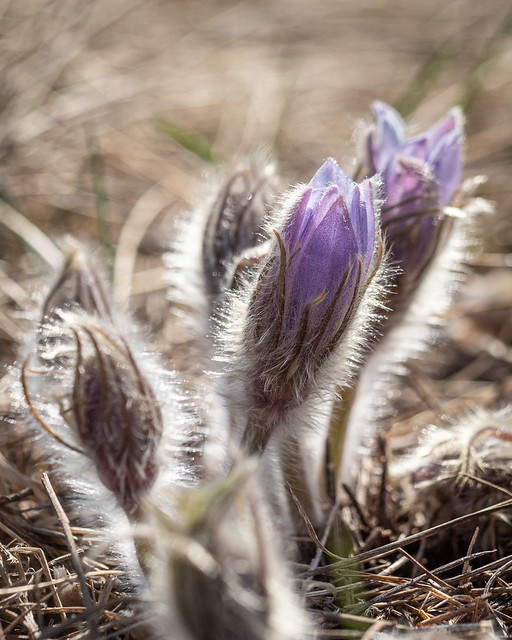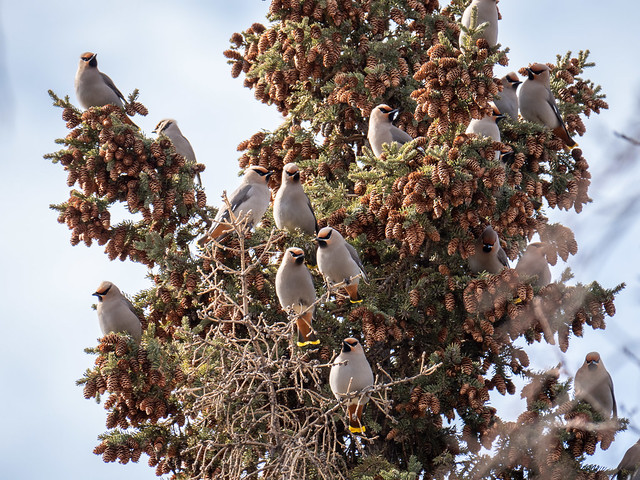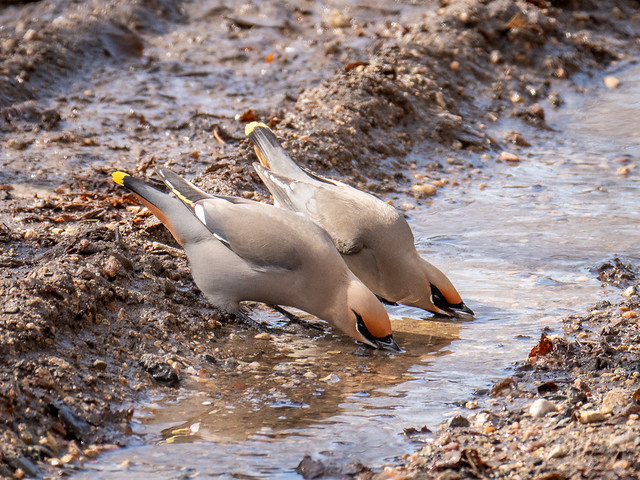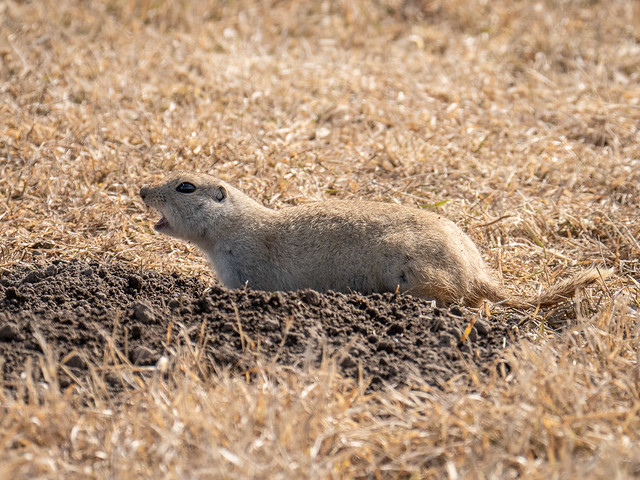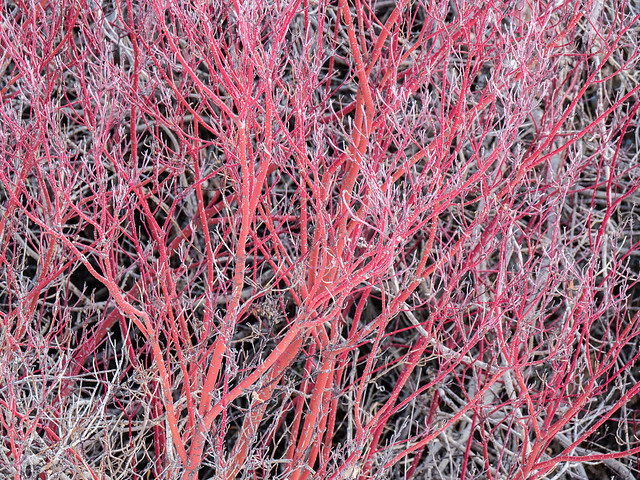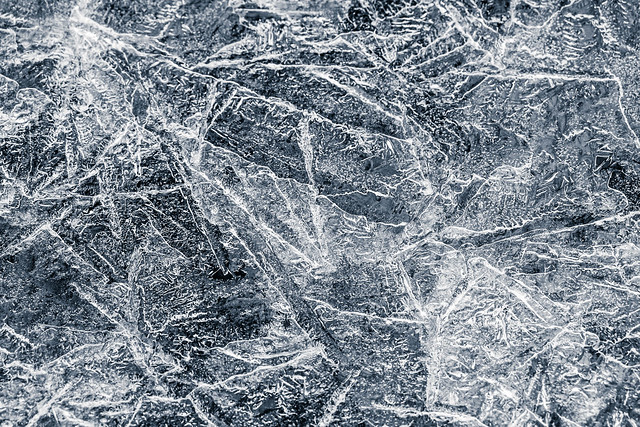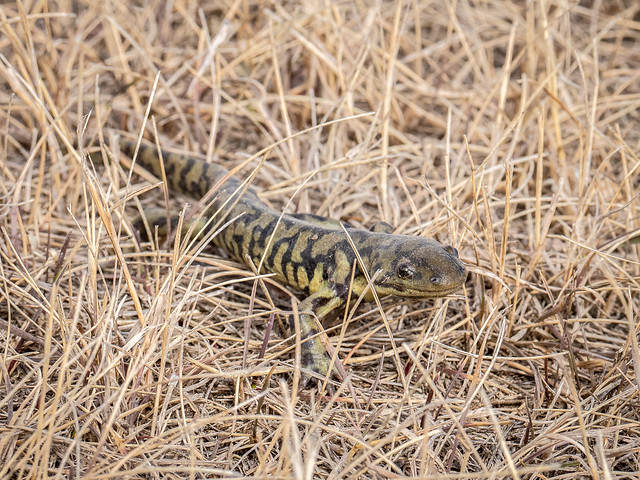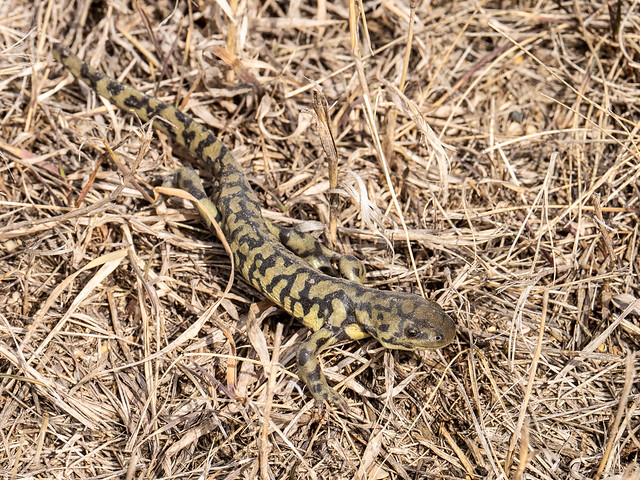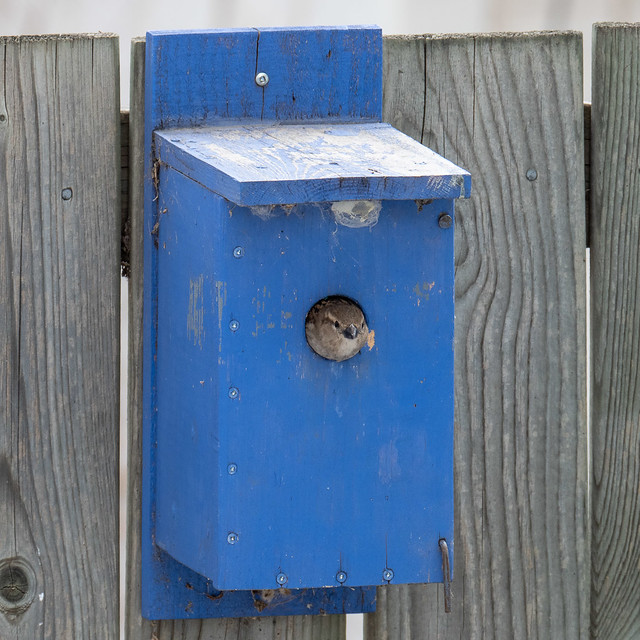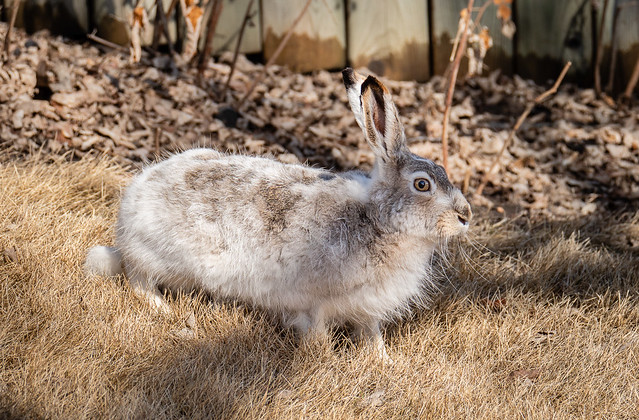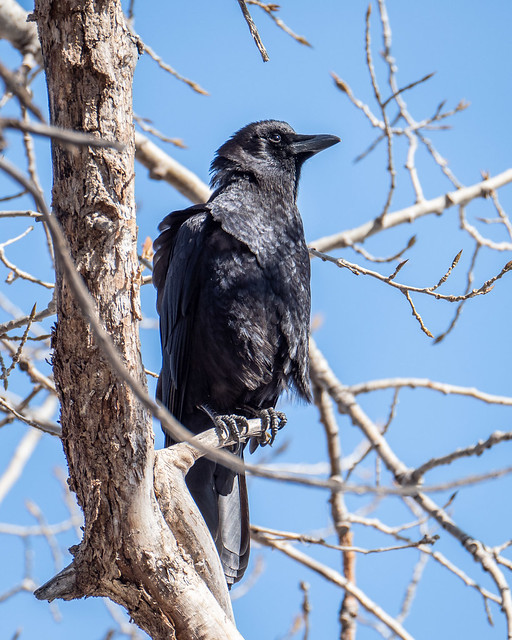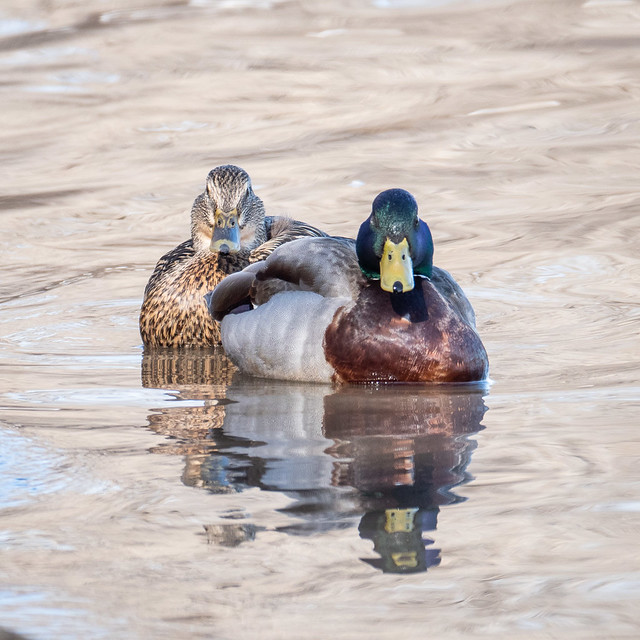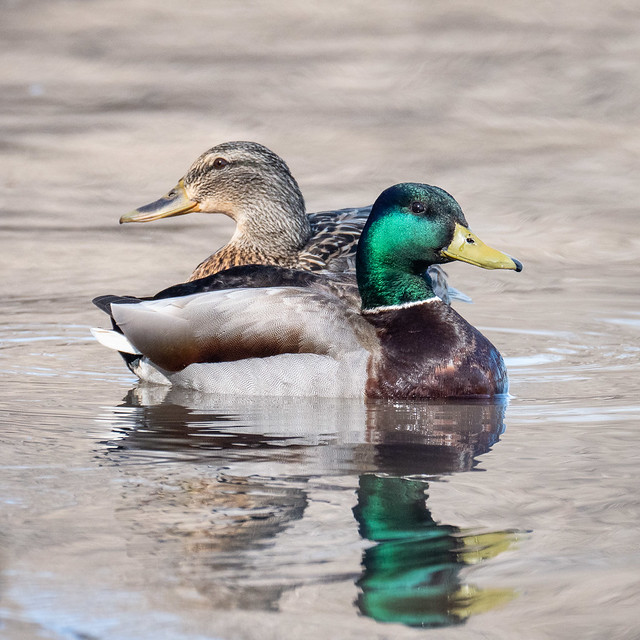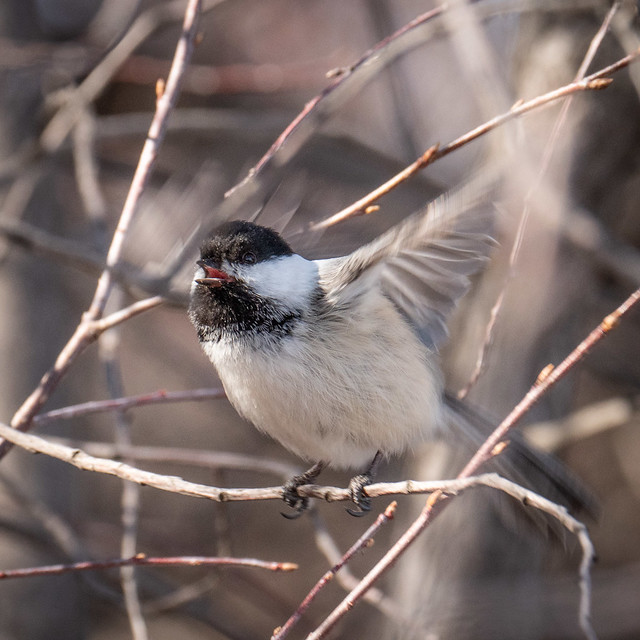
I managed to snap a few shots as it fled, but I had the closeup macro lens on the camera, which wasn't ideal. But I assumed it wasn't worth changing lenses since it was likely the only one I'd see. It was suitable conditions - a day that had started off cool but was warm in the sun. Those conditions bring them out to lie in the sun and raise their body temperature. (They're of course cold blooded like all reptiles.)

But then I saw a second one, and then a third. So I backed away and changed to my telephoto lens. It's a zoom and focuses quite close, so it would handle whether they were near or far.

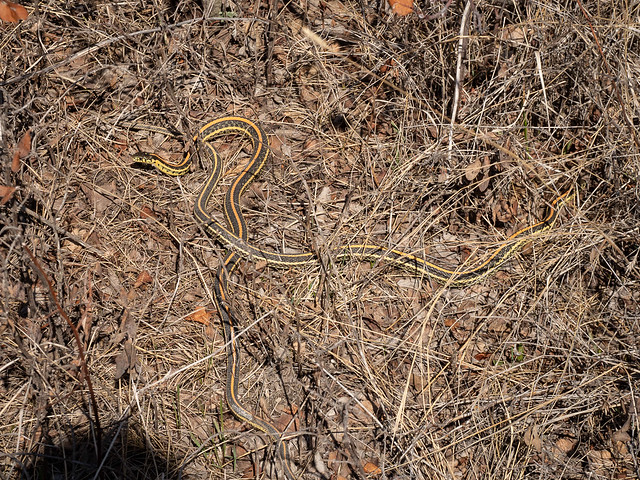
I sat down to wait and see it any others would come along. My father always used to say the best way to see wildlife was to sit quietly and wait. He was talking about East Africa, but it applies anywhere. When he told me that, I was a kid and sitting patiently didn't sound like much fun. Now that I'm older I'm more amenable :-) Of course, now that I was ready, no snakes came along and the question became how long to wait? Thankfully, another one came along. They were still hard to photograph sliding quite rapidly through the grass. I've got hundreds (literally) of out of focus shots of glimpses of snakes.

Soon I saw where they were going, and why the unusual congregation. Right in front of me, under some small bushes and grass, was a tangled mass of mating garter snakes. Garter snakes mate in the first couple of weeks after emerging from hibernation, multiple males mobbing a single female. It was hard to tell how many were in the ball - maybe a dozen? Strangely, as more males arrived, the ball didn't get noticeably bigger. And I didn't see any leave. It wasn't like the hundreds or even thousands at the big hibernaculum. Although perhaps there was a smaller hibernaculum nearby? It was funny to see the males arrive in the vicinity. They were obviously following the scent of the female, and it took some circling before they found the mass. Even after the female "escaped" (with the males in hot pursuit) new males showed up following the scent.

I don't know if it was me moving or something else that triggered it, but all of a sudden the mass of snakes took off. I think the female might have tried to escape but didn't get far (a few feet) before the males mobbed her again.

It was nice to see that there are still quite a few garter snakes around. I almost never see more than one at a time, so it's very hard to judge the population.
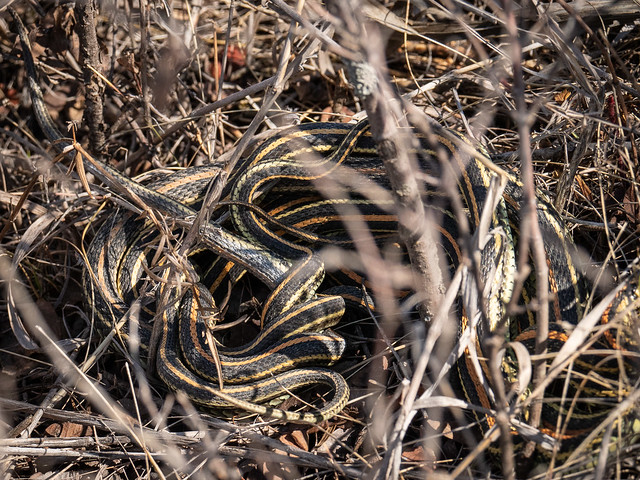
I was only about 10 feet off the paved trail, which was busy on a sunny warm day. Humorously, everyone assumed that someone with a camera must be out taking photos of the crocuses. Multiple people "helpfully" told me I was in the wrong place. A few people saw I was taking pictures of something and looked curious, but people aren't always too friendly towards snakes and a lot of people had dogs so I didn't enlighten them. I don't think anyone actually noticed the snakes I was photographing.
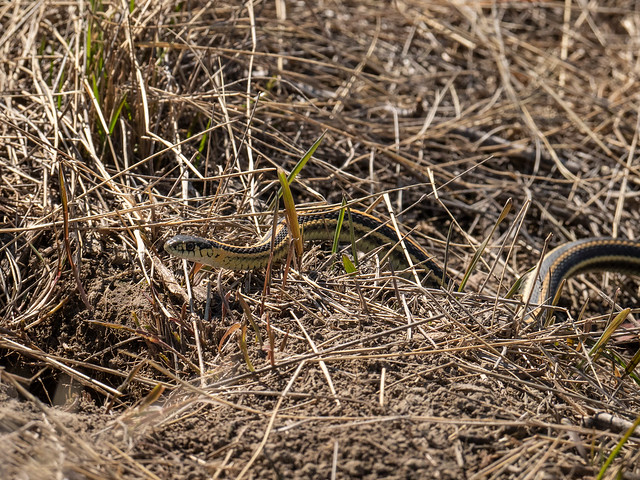
When you see their bright orange and yellow stripes they don't seem very well camouflaged. You'd think they'd stand out clearly. But in practice, unless they're moving, they're very hard to spot. If you hear one and can't see it, it's often because it's frozen. Stepping towards it will often cause it to move and that's when you have a better chance at seeing it, albeit usually fleetingly. Of course, that makes them hard to photograph since they're either invisible or disappearing into the distance. And the photographs are a bit misleading because I obviously choose the ones where the snake is more visible. Some of them have much brighter colors than others. They do tend to have duller colors when they are getting ready to shed their skin. Also, I notice in the photos that the colors seem brighter towards the head and duller towards the tail.
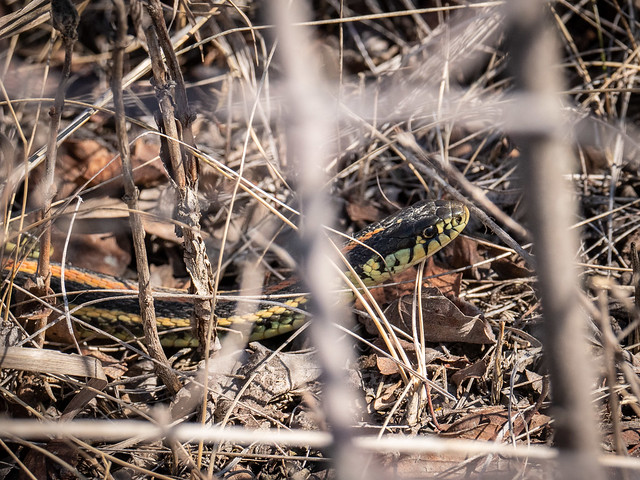
I realized afterwards that I should have shot some video. I'm not sure why I didn't think of it since I just shot video of the salamander the other day.
See all 22 photos

